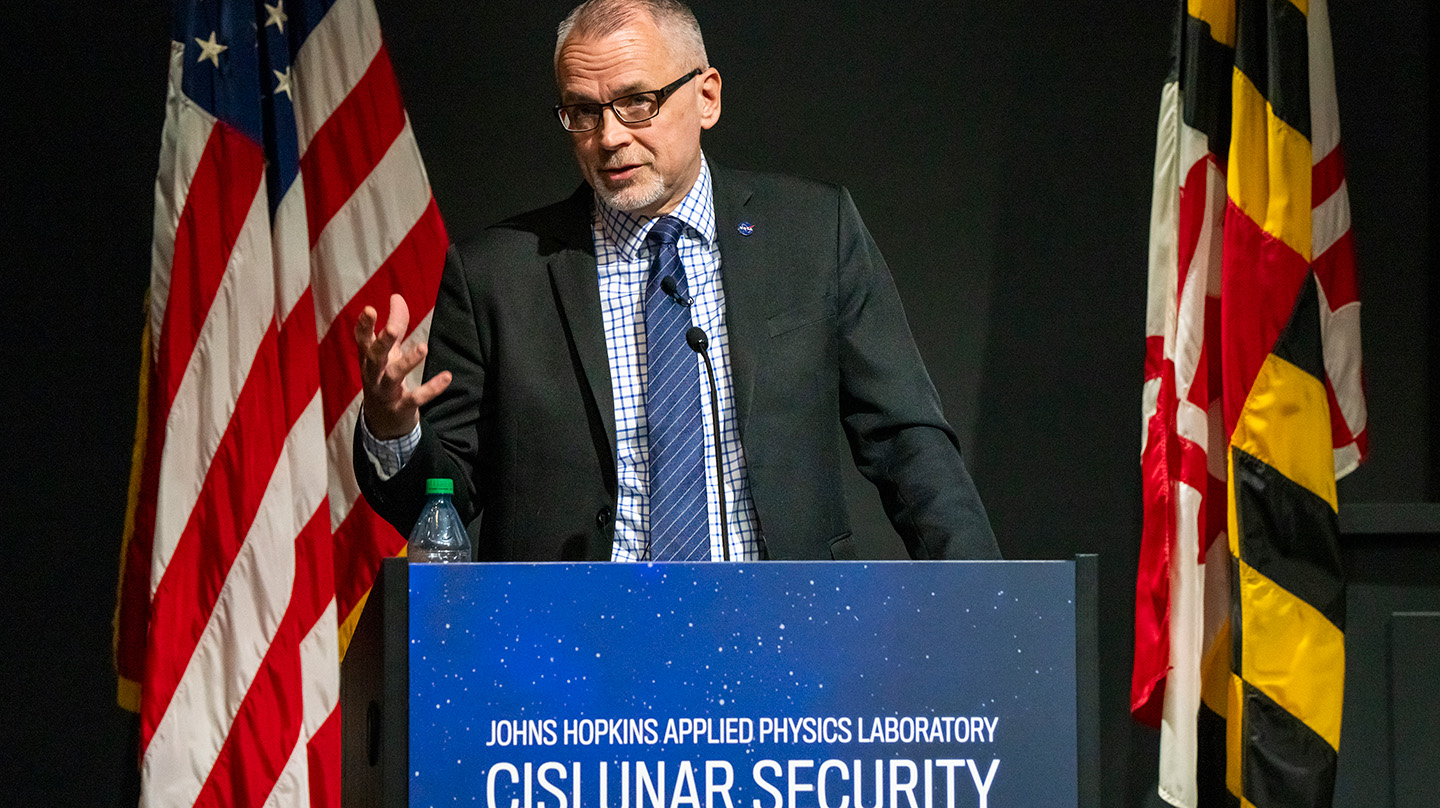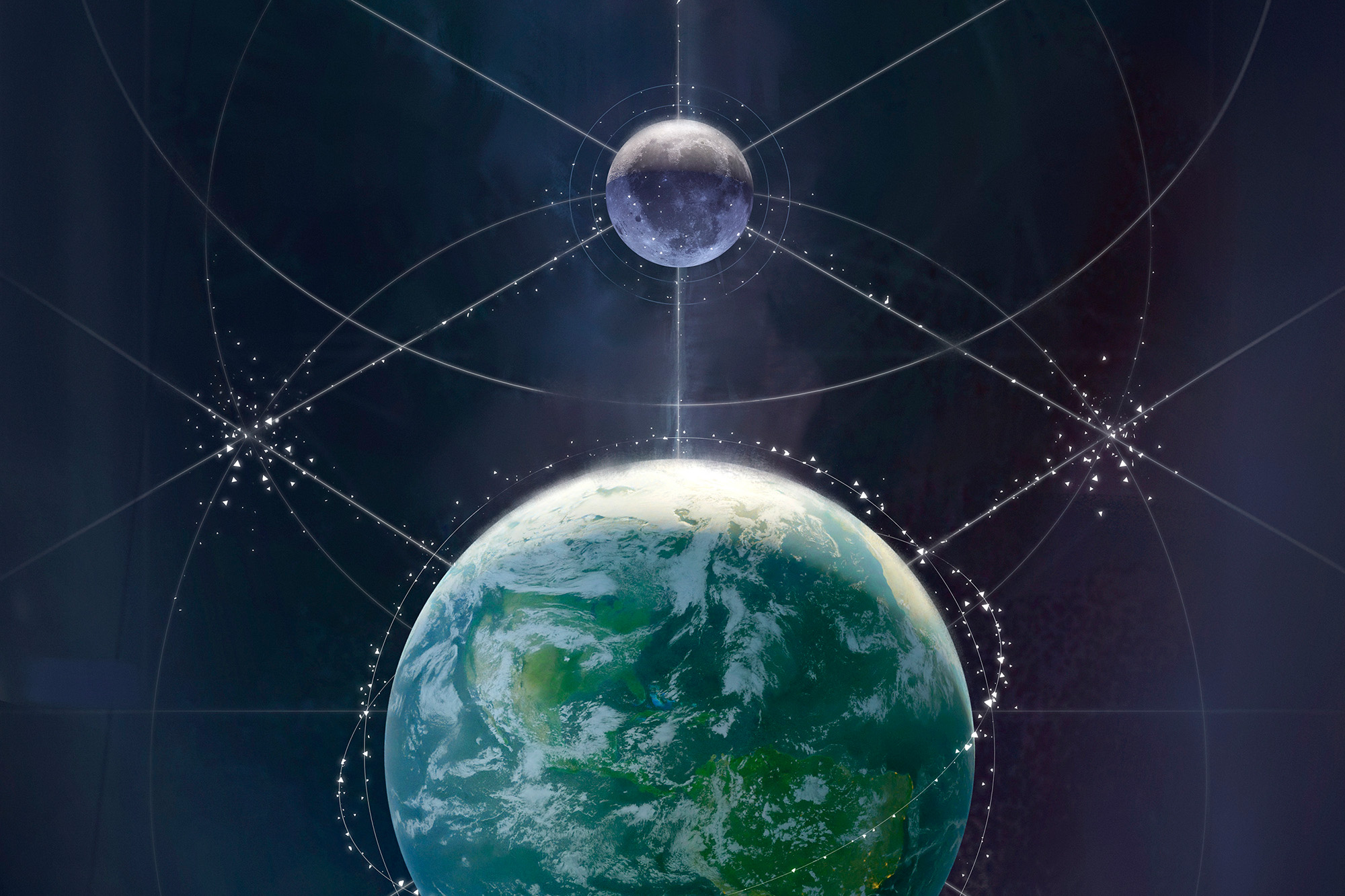Press Release
Securing the Moon’s Neighborhood: Cislunar Experts Gather at Johns Hopkins APL for Annual Conference
The neighborhood of orbits around the Moon, called cislunar space, continues to grow in importance — both scientifically and for national security purposes.
In December, the Johns Hopkins Applied Physics Laboratory (APL) in Laurel, Maryland, hosted its annual Cislunar Security Conference, bringing together leaders in government, academia, industry and other organizations.
Cislunar space occupies the region between approximately 22,000 miles (35,000 kilometers) above Earth’s surface and the Moon, as well as vital gravitationally neutral Lagrange points used for space missions, satellites and observatories.
Since 2020, APL has hosted the Cislunar Security Conference to leverage community knowledge in solving critical challenges connected to cislunar space.
“Across all five years, we’ve had attendees from more than 300 organizations,” said Steve Parr, National Security Space program manager for position, navigation, timing and cislunar at APL. “This is quite a testament to the importance of cislunar security now and in the future for our nation.”
An Essential Endeavor
The two-day event featured keynote presentations from Stefanie Tompkins, the director of the Defense Advanced Research Projects Agency (DARPA), and NASA Associate Administrator Jim Free.
The conference featured discussions with experts on topics including position and navigation in cislunar space, domain awareness, and supporting technologies to enable cislunar operations.
Alongside the Johns Hopkins University Whiting School of Engineering, APL hosted a one-day executive course just before the start of the conference, offering an overview of space applications within the cislunar regime, including mission orbits, transfers, proximity operations, formation flying and navigation. The course also provided a deeper understanding of current developments and challenges related to cislunar missions. Visit the Johns Hopkins Engineering for Professionals website for more information about the Whiting School’s executive course offerings.
A History of Collaboration
The Cislunar Security Conference is one of multiple endeavors that APL manages to foster national and global collaboration in exploring space. On behalf of NASA, APL leads the Lunar Surface Innovation Consortium (LSIC), a collaborative effort that brings together nearly 1,000 member organizations from government, industry, academia and nonprofits across the United States and around the world to develop technologies and strategies for establishing a sustained human presence on the Moon.
APL also guides the Lunar Operating Guidelines for Infrastructure Consortium (LOGIC), created in partnership with DARPA to address interoperability gaps in lunar infrastructure technology.
In November, APL signed a cooperation agreement with Intuitive Machines to work together on a safe, secure and reliable communications and navigation infrastructure in cislunar space.

